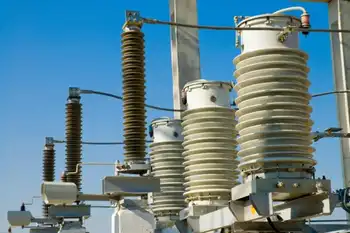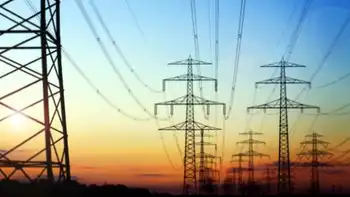FPLÂ’s demand for deposits adds to debt woe
By Florida Today
Substation Relay Protection Training
Our customized live online or in‑person group training can be delivered to your staff at your location.

- Live Online
- 12 hours Instructor-led
- Group Training Available
Now Knoblauch, the owner of the Historic Grant Grocery and Deli, who lives with his family above the ground-floor business, not only finds himself struggling in a weak economy, but also forking over nearly $1,400 in deposits to FPL for fear the utility will shut off his power.
"They're crippling me," Knoblauch said.
A FPL representative, while not speaking to Knoblauch's case specifically, said the company adheres to policies that have long been part of its guidelines. Missed payments often lead to deposit requirements, and the utility is starting to see more of that, spokeswoman Sharon Bennett said.
FPL reported $18.1 million in uncollectible bills statewide in 2007, compared with $9.9 million in 2002.
Consumer groups warn there could be more cases of FPL and other utilities being hard-nosed about deposits and terminating services as the slowing economy causes more customers to miss payments or not pay them at all.
"People are hard-pressed as the economy slows," said Michael Twomey of Florida Utility Watch Inc.
And utilities across the state are disconnecting customers in "phenomenal" numbers, Twomey added.
In Florida, about 110,500 customers of the Raleigh, N.C.-based Progress Energy Inc., had their electric power disconnected between January and May 2008. That's a 15 percent increase from the 95,500 customers who were disconnected over the same period in 2007.
As of July, the Jacksonville Electric Authority said more than 70,000 customers have had service disconnected.
Florida Power & Light would not release information on its disconnection rates.
FPL, which at the start of the year had 286,772 customer accounts in Brevard and 50,489 in Indian River County, is one of the nation's largest utilities, with a presence in 27 states.
Knoblauch's problems with his two FPL accounts started a few months ago.
The small deli he operates at 5390 U.S. 1 in Grant once had lines of customers ordering lunch, mostly construction workers during the peak period of the residential and commercial construction market of a few years ago.
As that business slowed — Knoblauch estimates he's down 60 percent in sales compared with a year ago — he began paying his FPL bills for both the business and residence past the due date.
Knoblauch has been a FPL customer since 1995 and the utility never before required a deposit from him because of his good credit history.
But after a few months of paying his bills late this year, FPL notified him it was requiring a $500 deposit for his business account.
The utility then asked for a deposit of $920 on his residential account. That's the average of two months of electric bills.
"I've paid it and now I'm late on my mortgage," Knoblauch said.
FPL's Bennett acknowledged finances are tight, particularly those on the lower-end of the financial spectrum.
"We are understanding that a significant number of our low-income and fixed-income customers are having a harder time making payments," Bennett said, before adding that FPL's "Care to Share" program is one avenue for help.
The Care to Share program provides emergency assistance funds to customers in a crisis situation, who are unable to pay their electric bill. It's funded by FPL corporate and employee contributions, and also from customers. Local nonprofit and/or government agencies administer it.











